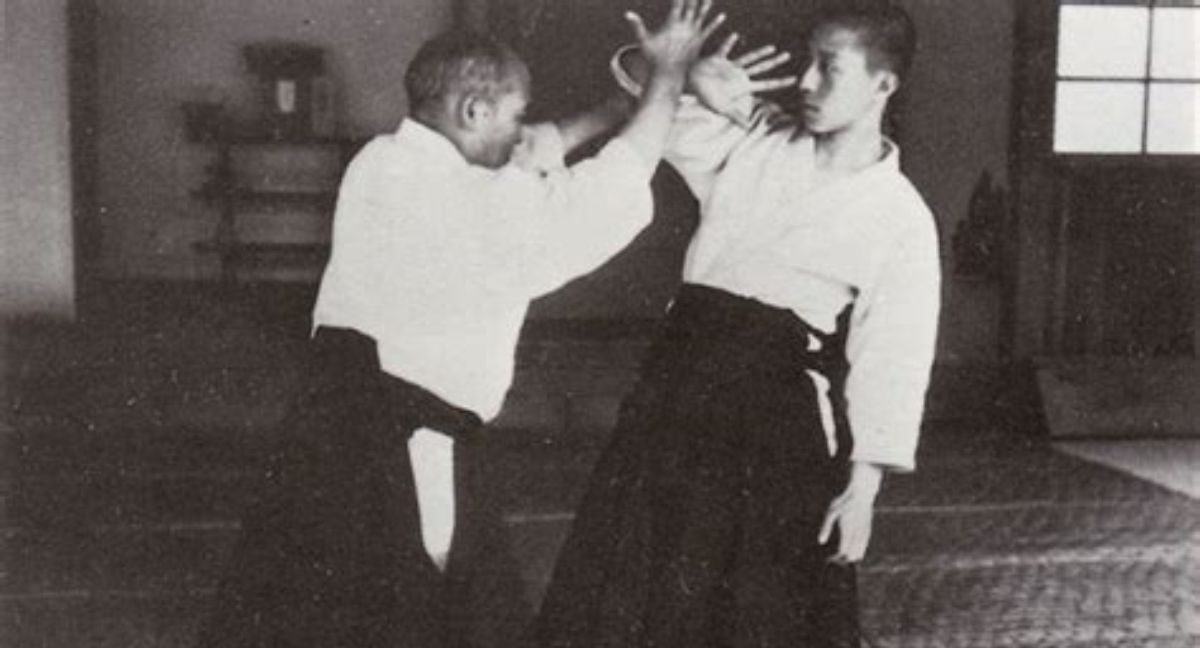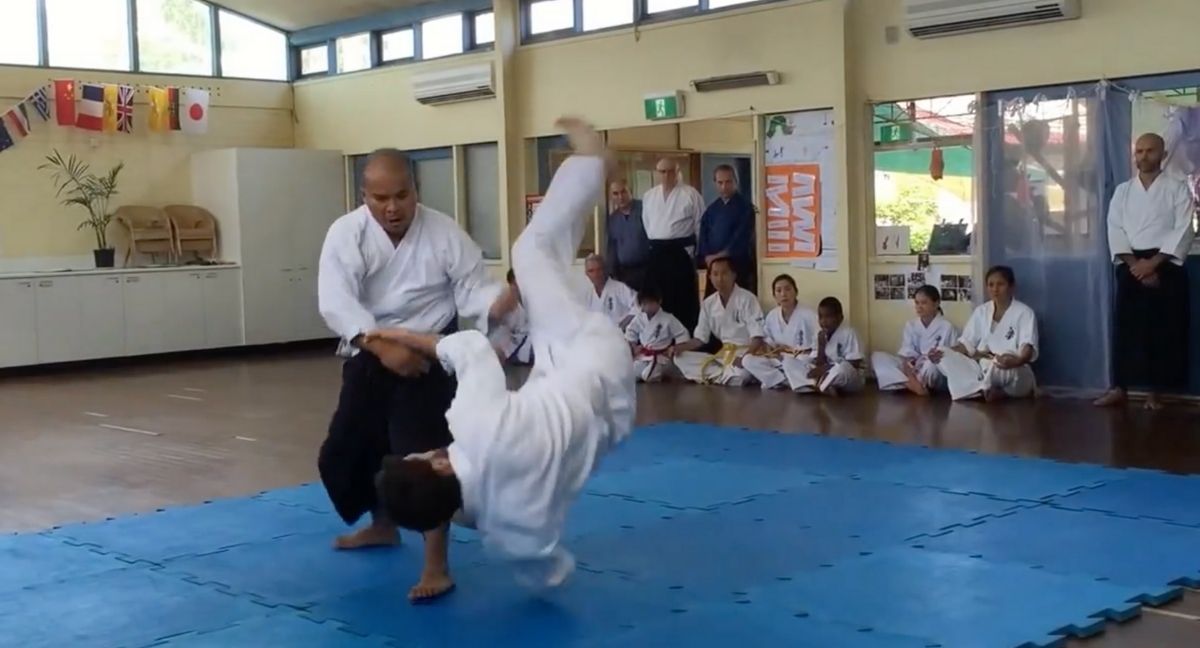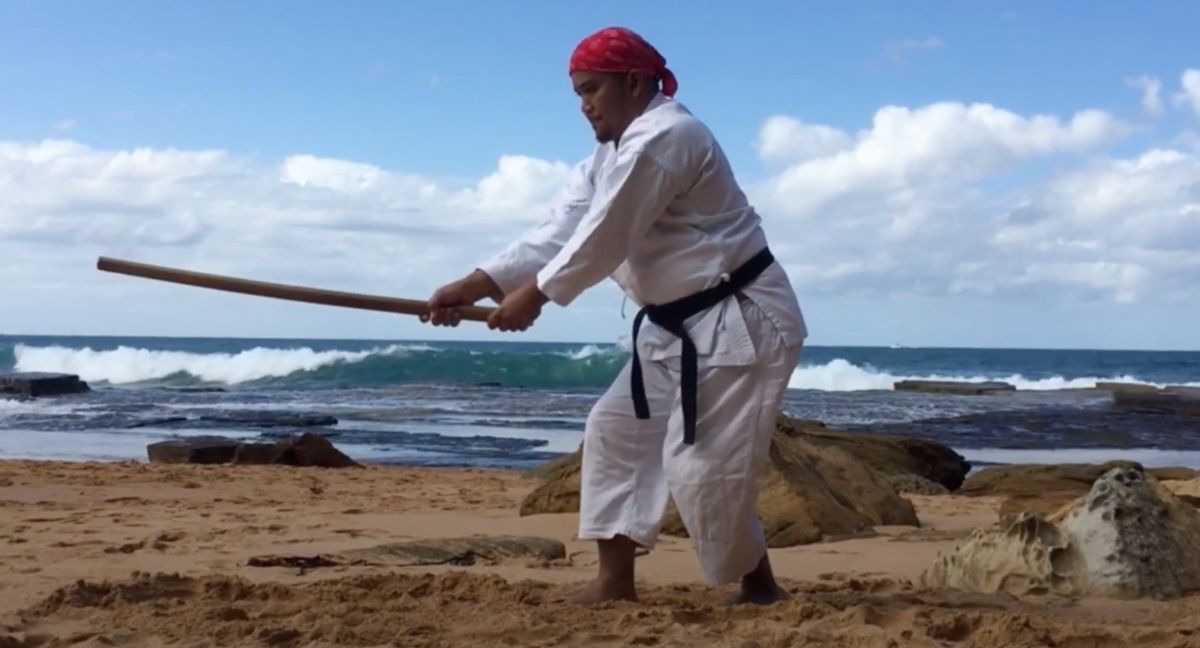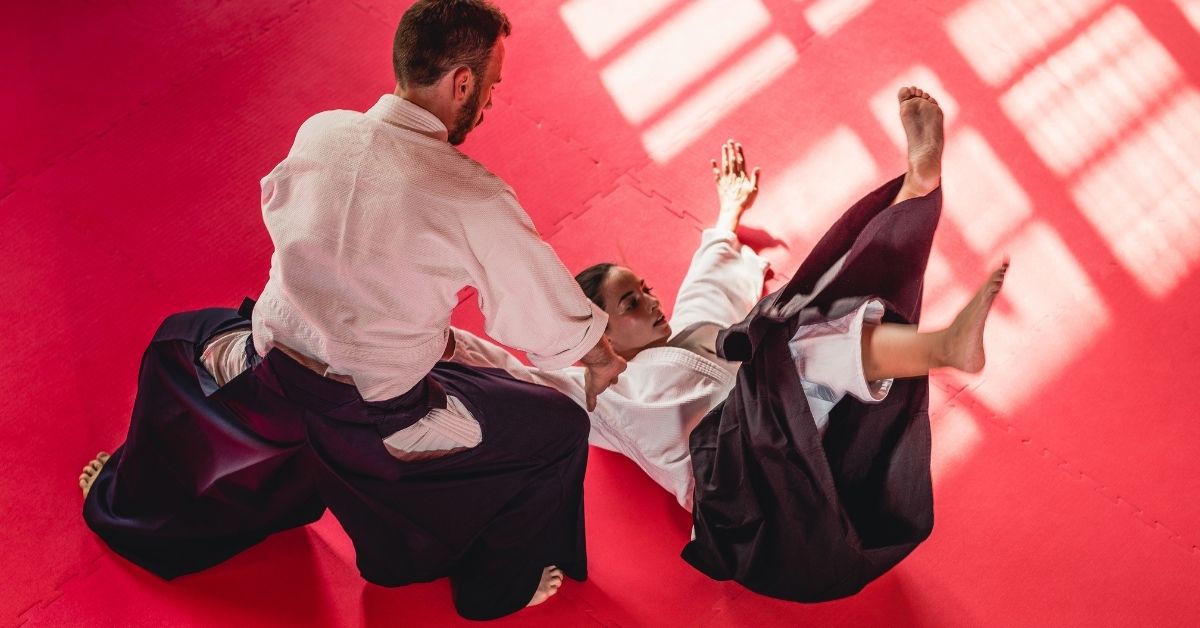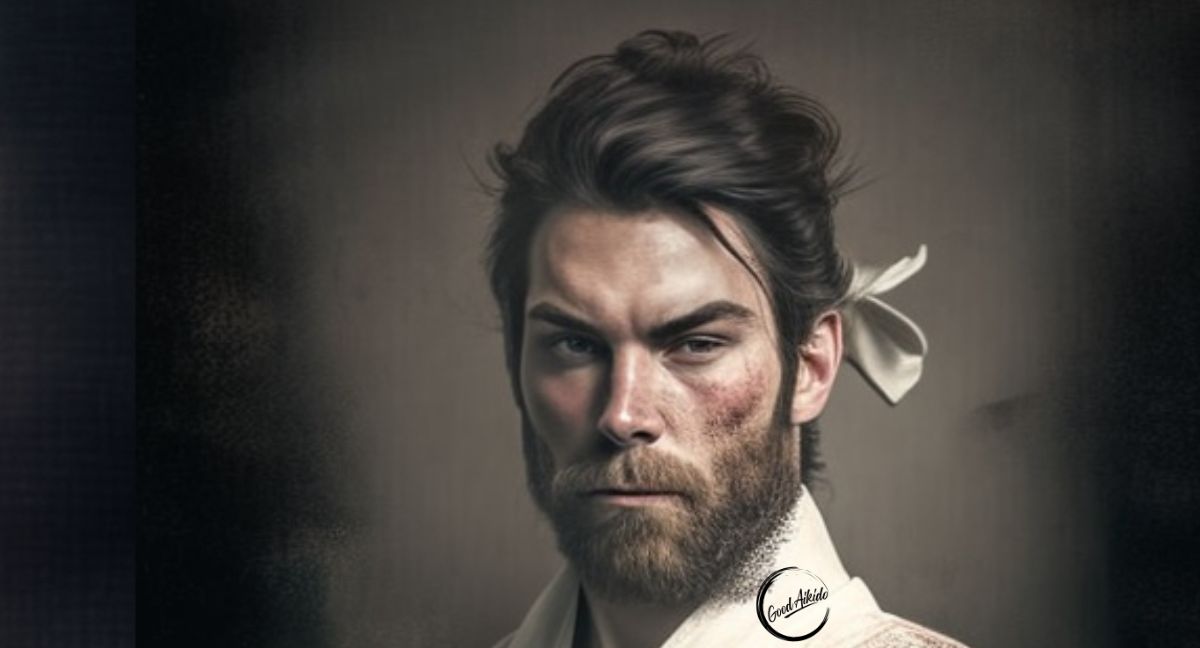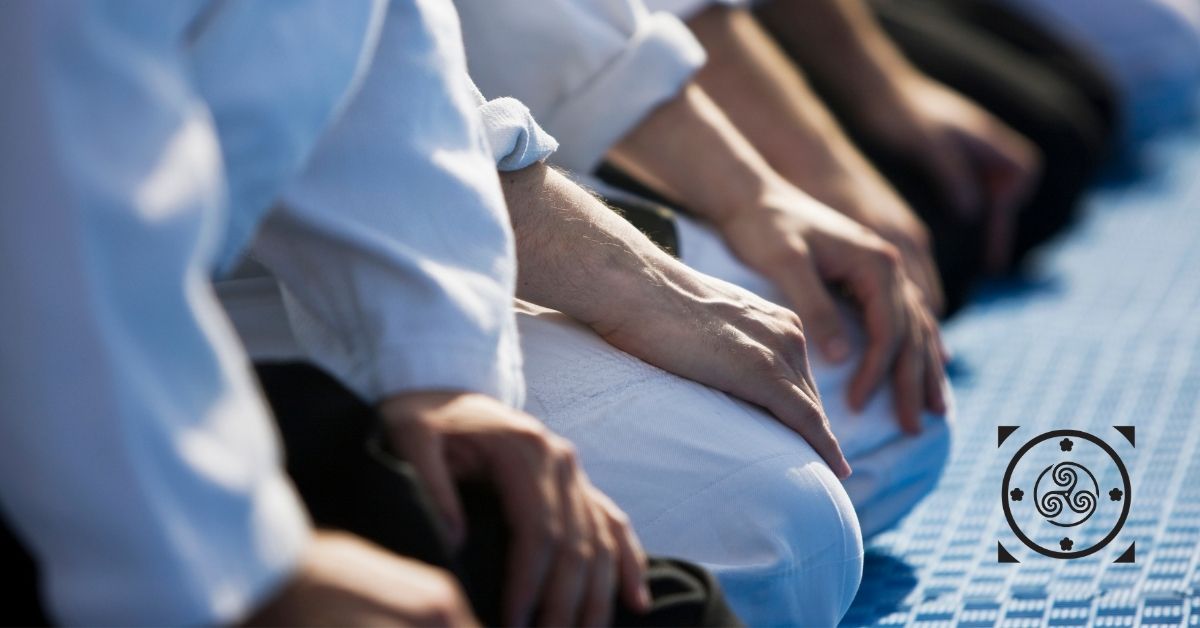The Iwama Aikido Story: The Short Version
Iwama Aikido or Iwama Ryu is probably the most popular Aikido style in the Sydney City CBD, North Shore, North Sydney, Macquarie Park, North Ryde, and the North-Western Part of Sydney. It arrived here via Aikikai in the 1970s and was nurtured by Morihiro Saito Sensei, Hitohira Saito Sensei, Saburo Takayasu Sensei, Mic Marelli Sensei, and their students. Iwama Aikido is also known in Australia and around the world as Aikido Takemusu.
Iwama Aikido – the ‘Bad Ass’ of Aikido – purposely retained its martial form and one can even say is a hard style of Aikido where the grip is full power, lots of atemi, lots of bukiwaza, and follows the original Aikido of Morihei Ueshiba O Sensei. I guess the people north of Sydney just want their Aikido to be the real deal.
Start your Iwama Aikido Training Today
Although Iwama Aikido is popular here in Sydney, its origin is around 7,800 km away, in the sleepy quiet farming town of Iwama Ibaraki Japan.
I am not an official Aikido History Scholar. The Late Stanley Pranin Sensei of Aikido Journal did a mighty fine job with Aikido history. So I am not here to debate and be ‘scholarly’. However, like most serious Aikidoka(s) around the world, I too, consumed every possible information I can gather about Aikido, which includes the subject of Aikido history.
The purpose of this article is to share a tale of where Aikido came from and to explain how Aikido in Iwama, became ‘Iwama Aikido’ or ‘Iwama Ryu’.
Here are some Iwama Aikido Masters Videos.
Morihei Ueshiba The Founder of Iwama Ryu and Aikido
Morihei Ueshiba (1883-1969) the founder of Aikido, also known as O Sensei, devoted his life to discovering and preserving the core of the martial arts that had been brought to his time by the Samurai, the elite warrior class who ruled Japan for nearly 700 years. O Sensei was born during the Meiji Period in Japan (October 23, 1868 to July 30, 1912), when the Emperor Meiji of Japan took back power from the ruling Shogan and the Samurai class. O Sensei was there to witness that transition. Yes, he probably saw the Samurai walking around in his town like they’ve done so in the last 700 years.
Iwama Aikido Story: Aikido Was Born In Iwama
Because of his birth date and place, for much of his life, he had direct access to the training and information necessary for him to take the essential principles of the Samurai, and shape them into one art, which he would call Aikido. Yes, one can say that Aikido is a mixed martial art.
O Sensei foresaw that most martial schools would die out because budo became a sport or a healthy ‘thing’, and planned that those who trained and studied his Aikido would have the benefits of the Samurai arts that he witnessed and mastered.
He envisioned that his Aikido would preserve the core of the Samurai tradition.
Start your Iwama Aikido Training Today
The Traditional Samurai Skills Are:
✅ Bukiwaza or Bujutsu (martial techniques, sword, other weapons and open-handed)
✅ Bushin, martial spirit
✅ Budo, the martial way of living
Some believe O Sensei personally achieved all this. Some even believe that O Sensei achieved enlightenment through budo.
Ueshiba O Sensei was a connection from which the Samurai era passes through to us. Today that connection is diminishing, not easy to find, and only the ones who truly seek it can find it. I wonder if you’ll be one of us who seek this?
Start your Iwama Aikido Training Today
The thing is, most Aikido schools do not practice O Sensei’s bujutsu. These Aikido schools have no sword, hardly any atemi, the irimi is mostly circular only, do not initiate techniques, teach only a fraction of the original techniques, do not practice (bushin) stilling the “mind”, and do not prepare for battle (budo) by strategic thinking about the situations that happened to others but not yet happen to them.
I spoke to a veteran Sensei of 30 years the other day and he admitted that he doesn’t know how to do the 13 Jo Kata. He hid behind his style that doesn’t require the 13 Jo Kata to be learned. So in other words he didn’t practice O Sensei’s Aikido. He practised a version of Aikido and no longer O Sensei’s idea of budo.
Why didn’t O Sensei stop everyone from watering down his effective Martial Art called Aikido? Perhaps he did. Then how come a lot of Aikido styles turned into a health regime instead of budo? Perhaps to answer this question, let’s look at history.
Start your Iwama Aikido Training Today
Iwama Aikido Story: O Sensei Moved To Iwama and Stayed There
After WWII, the traditional Koryu martial arts and Bujutsu (“old school” or “traditional school) were banned by the American occupiers. The story of this ban is a long one so I won’t include it in this article. Having said this, I think this is one of the reasons that O Sensei retired more than a hundred kilometres away in the sleepy farming town of Iwama. Away from what was happening in Tokyo.
During the martial arts ban, no one is allowed to practice the traditional Koryu. This included O Sensei’s Aiki Bujutsu. To get around this ban, new versions of the Koryu started evolving. Martial Art was changed into a sport or health course or a health regime, rather than a “Warrior’s Art”. Also, the term ‘Jutsu’ that denotes ‘Martial Art’ was dropped and ‘Martial Way’ which is ‘Do’ was adopted. Hence ‘Aiki Jujustu’ or ‘Aiki Bujutsu’ became ‘Aikido’ in the 1950s. This is all happening in Tokyo and the main cities of Japan. All modern martial arts listed in the Gendai budō (under the close eye of the American Occupiers) adopted and modernise and became a sport or a healthy way. This happened to the Aikido in Tokyo.
The Aikido in Tokyo (Aikikai) and all its different versions are the ones that spread across the world. This could be the main factor in Aikido becoming less ‘martial’.
Start your Iwama Aikido Training Today
Having said this, without Aikikai, Aikido probably would’ve made it to our modern world. Thanks to Doshu Kisshomaru Ueshiba (O Sensei’s son) Aikido was well organised and was disseminated throughout the world. If this didn’t happen, then you and I probably would’ve not even had a chance to experience Aikido at all. Saito Sensei was a 9th dan Aikikai Shihan and a lot of our Iwama Aikido brothers and sisters are still under the Aikikai umbrella.
Iwama Aikido is one of the flavours of Aikikai’s BIG umbrella. In fact, Iwama Aikido got disseminated throughout the world via the Aikikai vehicle. So thank you Aikikai for the gift of Aikido. Also when I travel for work or for holidays, I usually bring my keikogi, white belt (in case), black belt, and hakama with me, and join the local Aikido club or school there.
Start your Iwama Aikido Training Today
Most likely the Aikido club or school near me would be Aikkai. So I’ll train there in the Aikido club near me. It is better to train than not to train at all. Once again thank you Aikikai for the Aikido near me, for the Aikido that is readily available in most cities around the world. Just a heads up I got my Black Belt (Yudansha) Certificates from Iwama Shin Shin Shurenkai and Aikikai.
Now back to our topic.
Did O Sensei resist this change? Yes. According to Saito Sensei, when O Sensei visited Hombu Tokyo, he used to scold everyone for doing this new version of Aikido. There were more stories and anecdotes from Saito Sensei on O Sensei’s resistance to the new version of Aikido that I don’t want to write here because after all, they were all anecdotes. We Aikidoka in the 21st century would never truly know what happened then.
The thing is we should not choose between an Aikido that is martial or an Aikido that is healthy and holistic. I believe we can have both. This is very possible. A lot of Iwama Aikido, Iwama Ryu, and Aikido Takemusu practitioners I know are very healthy and are sharp peaceful warriors at the same time. Just look at Sergey Utrobin of Russia (6th dan Iwama Ryu), 8 consecutive year national knife fighting champion. He uses Iwama Aiki, and he has never been beaten. He’s super healthy, a top athlete, he has a very good mind, and a true martial artist.
~ Crom Salvatera
Meanwhile, in Iwama, O Sensei refined his Aiki Jujutsu and taught it to the farmers and citizens of Iwama. The farmers of Iwama were strong and rough. They didn’t have the finesse of the city dwellers. Although they were polite like most Japanese, they were more black and white and less abstract in terms of technique. If a technique did work, then it didn’t work. No BS on that. The Iwama deshi (students) farmed and handled animals during the day, and practised O Sensei’s Aikido. One of the influences of the Iwama farmers on Aikido can still be felt today. Iwama Aikido is one of the few Aikido Styles that practices a full power grip, solid (Kihon) form, and resistance in training- we don’t ‘just’ fall. When an Iwama Aikidoka grabs you, it’s very hard to move. If you want to do Aikido to us, you have to use a good Aikido technique to move us. Plain and simple.
Click here to start your Iwama Aikido Training Today
In Iwama O Sensei to continue his research and training. He spent most of his time there until his death in 1969. In 1947, Morihiro Saito became his uchideshi (a live-in apprentice) and remained so for twenty-three years. Saito Sensei was so beloved and trusted my O Sensei that O Sensei gave Saito Sensei land next to the Aiki Jinja to guard. A symbolic and literal act that Saito Sensei is THE true guardian of O Sensei’s Aikido. Even today the Saito Family is still there in Iwama teaching O Sensei Iwama Aikido.
Throughout O Sensei’s long lifetime, no other student can claim this day-in-day-out exposure to the Great Master of Aikido. The duration of time, a saturation of physical technique, and total exposure to the founder’s daily living made Saito Sensei the O Sensei’s technical heir.
Morihiro Saito Sensei The Technical Guardian of O Sensei’s Aikido
Morihiro Saito Sensei was well aware of the responsibility that lay with him alone to preserve the original Aikido. Iwama Aikido is used to describe the Aikido that O Sensei taught Saito Sensei and the Aikido transmitted to his Iwama students. Iwama Aikido arrived in Sydney Australia in the 1970s. Iwama Aikido was passed to Mic Marelli Shihan who was himself an Uchideshi of Saito Sensei. I was blessed to learn Iwama Aikido from Mic Marelli Shihan in the last 30 years. I too went to Iwama and became an Uchideshi under the guidance and teaching of Hitohira Saito Sensei the Head of Iwama Ryu.
Iwama Aikido Story: O Sensei Fused All His Knowledged In Iwama
O Sensei spent many years combining an integrated system of samurai weapons and open-handed techniques where the three parts complement and enhance the whole. His open-handed techniques use the same stances, postures, movements and strategic principles as his weapons. He instructed his Iwama period students to think weapons when practising openhanded techniques and to think openhanded techniques when doing weapons.
Click here to start your Iwama Aikido Training Today
The Sword is What Makes The Iwama Aikido Story Stick Out
So the sword that O Sensei taught in Iwama from the mid-1950s is the sword of Aikido. Today, however, most Aikido schools, if they teach weapons at all are not doing the founder’s weapons! Some practice Iaido or some modern Kendo practices, which will not improve their open-handed technique as Iwama Ryu Ken Jo (sword and staff) practices, do. The practice of Iaido and Kendo are excellent in themselves, but the body forms of Iaido and Kendo will get in the way of the student from ever mastering Ueshiba’s Aikido.
The main possible reason for O Sensei’s Aikiken and Aikijo not being taught in most Aikido dojos today is that only some Iwama Aikidoka knew it, and there were not a lot of them.
During the 60s and up to the 90s Aikido’s popularity grew quickly which meant that lesser instructors could attract a following.
O Sensei’s organisation, headed by his son (the late Doshu Kissomaru Ueshiba) was always being asked to supply instructors within Japan and for foreign countries.
Aikido is fast becoming a health art like taichi and pseudo martial art where masters can throw their students without even touching them. This gives Aikido a really bad wrap on the internet. It’s sad really, and it gives the world of MMA content to use for their amusement.
Click here to start your Iwama Aikido Training Today
Most Aikido Masters Did Not Do O Sensei’s Bukiwaza
In Japan itself, no one who has a lower rank than 4th Dan is considered to be an Instructor (a 4th Dan is understood to be a master of the technical content of his chosen art). It was known that O Sensei taught sword and weaponry, but as they did not have easy access to him, it was easier to teach the Iaido or Kendo they had learnt at school or elsewhere. Another option, taken by most, was to do only the ‘open-handed’ techniques.
During his long life, O Sensei had many students. Some went on to become successful in spreading Aikido. Of these, many had gone their own way developmentally (with or without his blessing) long before he called what he was doing Aikido (the 1950s).
With the ever-increasing popularity of Aikido though, many of them, or their organisations started calling what they did Aikido too, making it harder to find O Sensei’s Aikido.
Much of Aikido as we know it today is not what Ueshiba would have called Aikido himself. O Sensei, Morihei Ueshiba, the founder of Aikido – if he was still alive today would be very unhappy with most Aikido schools.
He would be telling anyone who would listen that there cannot be Aikido without the sword, as there cannot be Samurai without the sword. Without the sword, the links to the Samurai past is severed. He would view the work of Morihiro Saito (now being continued by some of his son (Hitohira Saito) and his deshi as the straight and narrow (yet certain) path to be crossed by all who wish to experience true Aikido.
The Aikido Software Operating System That Was Never Implemented
Morihei Ueshiba would be unhappy with the state of Bushin and Budo in modern Aikido. His famous deshi all seem to be in agreement that they did not understand much of what he was talking to them about, that his language was arcane and very esoteric. O Sensei did not require his students to practice kotodama, meditation or pray with him.
The founder was, according to his son, the most religious man in the whole of Japan. He was a member of the Omoto Kyo Shinto sect. It is fortunate for Aikido that he was not taken seriously by his famous students in this regard O Sensei’s spiritual practices were too steeped in what to believe rather than how to experience states of being.
Aikido for the most part has been spared becoming another religious “ism”. However, we should have no doubt that O Sensei would want Aikido schools to teach how to experience different states. Students should not be taught what to experience or think, but how to experience and think clearly.
Click here to start your Iwama Aikido Training Today
Iwama Aikido Story: Aikido Mastery Starts At 4th Dan
The main obstacle to achieving O Sensei’s Aikido is the quality of Aikido teachers. In the best of worlds, all Aikido teachers would be 4th Dan holders in both Aiki open-handed and Aiki weapons, be able to teach all students how to change their state of being, and teach clear thinking. All teachers would be of good character, be good students themselves, and be excellent role models for their students. There are some Aikido Senseis that is all of the above, so Morihei Ueshiba’s Aikido is alive but unless these Senseis can “replicate” themselves through their best students then Aikido the Martial Art will fade out of existence.
The bujutsu that Morihei Ueshiba bequeathed to us can, to more or less a degree, only be found in what is commonly known in Aikido circles as Iwama Ryu, Iwama Aikido, and Iwama “Style” schools.
Good Aikido is a Modern Iwama Aikido School
Today Iwama Aikido has also evolved like when O Sensei taught the rough farmers of Iwama. Iwama Aikido still has O Sensei’s curriculum, but this time tested and practised on and by Russians, Germans, and Scandinavians (Vikings). Our Aikido brothers and sisters from this side of the world are (for lack of a better word) – GIANTS in comparison to the Japanese. I personally practised Aikido with its full power, full grip, full resistance, full speed, no holds barred during my Uchideshi days in Iwama. It was hard, they were bigger and stronger than me. I really need to use technique and position to get my Aikido working. We lived, breathe, and practised O Sensei’s Aikido 3+ hours a day, six days a week. It was exactly the Aikido that O Sensei would’ve been proud of. This is the Aikido that I bring back to Sydney. This is the Aikido I teach in Good Aikido.
Good Aikido continues the tradition of teaching O Sensei’s Aikido. This is one of the things that makes Good Aikido, a good Aikido school.
So what are you waiting for? Join me and learn O Sensei’s Aikido.
Written by Crom Salvatera
Learn More About Good Aikido
Get Started with your Good Aikido by contacting us today
Click this to find out about the Aikido Class Schedule and Tuition
Learn and do the 20-Minute Aikido Practice
Learn Japanese in an Aikido Class
Aikido Technique Books
Subscribe To My Newsletter
BE NOTIFIED ABOUT BOOK SIGNING TOUR DATES
Donec fringilla nunc eu turpis dignissim, at euismod sapien tincidunt.

